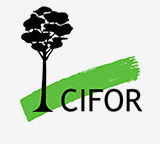Session description: Unlocking capital to finance sustainable land-use solutions at scale needs robust finance instruments. Yet, we face a lack of tested bankable business models and a related shortage of capital (public or private grants) available to buffer high investment risks. In response to these challenges, the session will present sector-specific instruments for making investments in forestry, land use and natural capital management work. Which are they? What are key challenges? Where are the gaps? And where are the synergies between different sector solutions?
To compile state-of-the art solutions able to unlock private investments, participants shared knowledge and their experiences of working instruments, and unfold sector-specific investment challenges. In particular:
- For each specific sector case and risk profile, participants determined the most appropriate financial instruments.
- For each instrument, the session discussed existing markets (in terms of scalability, tradability, liquidity, etc.) and identify potential investors.
- For all proposed solutions, discussants quantified the economic (e.g. for agriculture, timber industry, bio-energy, tourism) and environmental impacts.
The session showcased approaches from a range of specific sectors and objectives: afforestation–reforestation, forest and land conservation, management of degraded forest or land, externalization of the value of natural capital, green infrastructure as alternative to grey infrastructure or as climate change resilience solution, pro-nature/biodiversity businesses, sustainable management of supply-chain, and more.
The Climate Bonds Initiative contributed specific experiences of mobilizing debt capital markets for climate solutions, focusing on opportunities, remaining barriers and the role of standards for agriculture and forestry.
Background reading:
- Innovative Climate Finance Products(EIB;2014)
- Conservation Finance: moving beyond donor funding toward an investor-driven approach (CREDIT SUISSE, WWF and McKINSEY & Company; 2014)



































